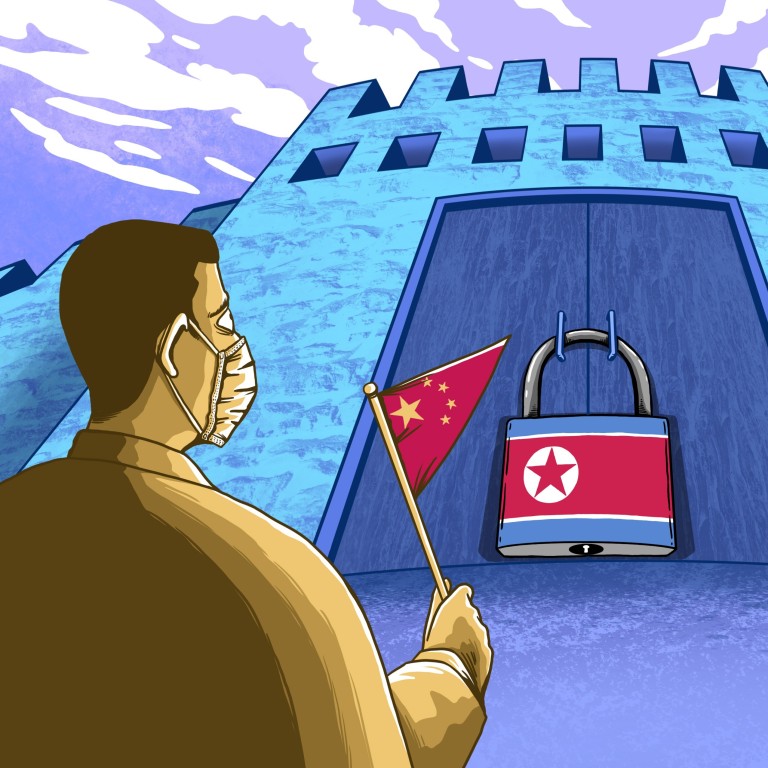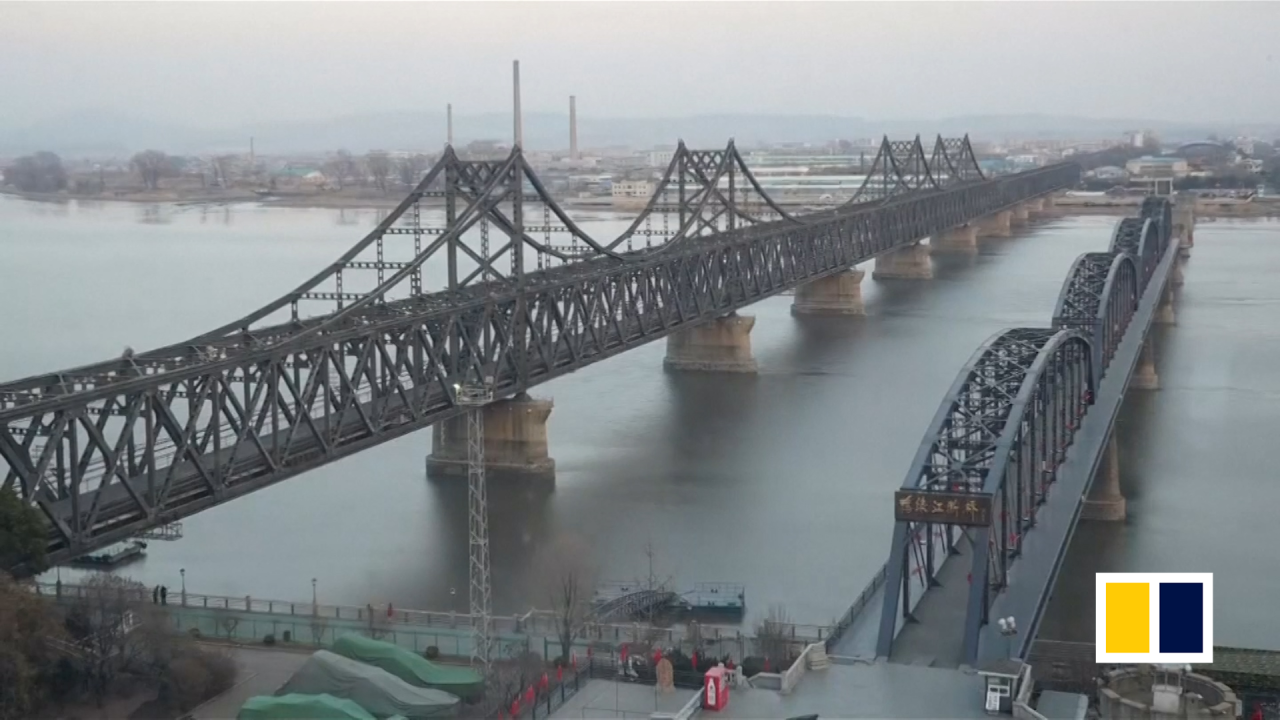
China’s gateway to North Korea feels chill of Covid-19 border closure
- The northeastern Chinese city of Dandong is suffering as its link across the Yalu River remains closed to tourists and small businesses
- Even the May holiday travel boom failed to boost the local economy as visitors mostly stayed away
The smiling, bright-eyed North Korean waitress responded in accented Mandarin: “Sorry we don’t have it any more.” Simon, a Chinese tourist guide, who has specialised in North Korea tours for four years, was certain of the reason. “It’s out of stock because nothing can be transported over.”

North Korea’s Taedonggang beer – named after the river running through its capital Pyongyang – stopped flowing into China last year, along with most other North Korean exports, according to official Chinese customs data.
There has been much speculation about the continuing border lockdown. Human rights groups warn North Korea is facing dire food shortages, with observers predicting Pyongyang will soon have to ask China for aid, while media reports suggest normal trade between the two countries could soon resume.
But not all trade has been suspended. The latest Chinese customs numbers show exports to North Korea spiked significantly to US$12.98 million in March – from about US$3,000 in February – topping the US$10 million mark for the first time since September.
Is China about to reopen border with North Korea?
According to the data, North Korea’s exports to China last year totalled US$48 million, down about 77.7 per cent, while its imports fell 80.9 per cent to US$491 million. But the hermit kingdom continued to buy Chinese chemical fertilisers, pesticides, herbicides and related items, which accounted for around 80 per cent of Pyongyang’s imports in March.
Chinese analysts believe these were transported as emergency supplies but did not mean cross-border trade had normalised.
“It was because these [goods] were necessary for North Korea to catch the timing for spring sowing,” said Jilin University professor Zhang Huizhi, who specialises in North Korean affairs.
“Some [goods] have been shipped over but more urgent supplies would be transported via the bridge at Dandong,” said Lu Chao, from the Liaoning Academy of Social Sciences.
There was no sign of Chinese freight trucks and trains on the China-North Korea Friendship Bridge at Dandong when the South China Morning Post visited in late April, and the impact of the border shutdown could be felt on every street corner of the small city in Liaoning province, with its population of just 2.5 million.

02:51
Dandong: China's border city with North Korea
Situated across the Yalu River border, just 500 metres (1,640 feet) from North Korea’s Sinuiju city on the opposite bank, Dandong has always been the gateway for tourism and trade between the two countries. According to government websites, 80 per cent of trade passed through Dandong, which was also a main entry point for tourists into North Korea.
False eyelashes and wigs are some of the best known consumer products to originate from the links between businesses in Dandong and their North Korean neighbours. “Basically our entire business was put on hold last year,” said a 32-year-old local named Cui, who runs a family enterprise in the city making eyelashes.
Like many other companies in Dandong, Cui’s business would send raw materials over the border by truck to have them semi-manufactured in North Korea with its cheaper labour, before the products returned for final packaging in China.
Cui said that, from late last year, his company had been hiring Chinese workers to keep some of the business running in its Dandong factory. He refused to say how much the company had lost, or how big its trading volume had been, but said its products were only sold within China.
North Korea to build new factory zone near border with China
Trading company shop fronts in Zhenxing, one of Dandong’s busiest districts, remain closed, a common scene since the pandemic broke out, according to locals.
Before the pandemic, the logistics industry was the biggest contributor to the city’s economy, at 20.6 per cent of its GDP, according to local government figures, with more than 94 per cent of it coming from tertiary production.
Yet in 2020, Dandong’s tertiary sector was the only one to record a drop in growth, at 2.2 per cent. The city recorded just 0.4 per cent GDP growth in 2020 on the previous year, far lower than the country’s overall 2.3 per cent growth.
Even before the pandemic, Chinese businesses working with North Korea were facing pressure from the escalated international sanctions against Pyongyang’s nuclear weapons programme.

The international ban on processed goods from North Korea was already having an impact on many of Dandong’s businesses, but the virus also wiped out the city’s tourism trade.
In normal times, the Dandong economy would have been boosted by China’s Labour Day holiday, which marked the beginning of its peak travelling season to North Korea. Around 200,000 Chinese tourists visited the hermit kingdom each year before the pandemic – 80 per cent of its foreign visitors, according to a 2019 article in Chinese state newspaper People’s Daily.
Tours from Dandong to North Korea were so popular some local tourism companies were paying three to five times the 250 yuan (US$38.60) cost of a train ticket to secure seats for their customers, according to sources who spoke to the Post.
Competition was so keen tourism companies would slash their margins to less than 50 yuan per traveller, according to Simon the Chinese tourist guide.
China-North Korea trade spikes after pandemic slump but sanctions bite
“Business has stopped for us, whose careers are tied to North Korea completely, we had to look for other ways,” he said, adding that his company had so far tried to make money by using its social media platform to sell fruit online.
The May Day holiday would also have been a golden opportunity for restaurants and retailers along the river bank, but not this year.
Chinese online travel giant Trip.com declared an all-time high in travelling numbers for the break, with up to 200 million domestic journeys, exceeding the 195 million trips over the same holiday period in 2019, before Covid-19.
Few of them travelled to Dandong. A ferry tour guide on the Yalu River said there used to be at least eight ferries at a time on the first two days of the May holiday, taking curious tourists on 30-minute rides for a closer look at the North Korean side.

On both days this year, he said, there were only three or four ferries running simultaneously.
“In the past, it would be quite common to spot some North Korean workers on the other side of the bank, and we would wave to each other, but that has gone nearly completely out of sight since the pandemic,” the guide told his passengers.
“We would also be able to bring you closer to their side of the bank at normal times, but now we have been warned by the North Korean authorities to stay further away,” he added.
“It’s hard to say whether the drop in tourists is because of not being able to go to North Korea,” the guide told the Post. “The whole industry is anxious, of course. We want the border to open soon, but I do not think travelling will happen in the foreseeable future. Our ferry ride is the closest you can get for now.”

